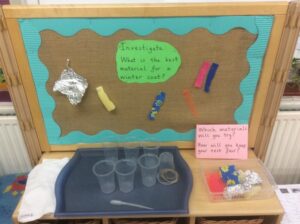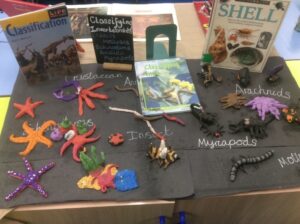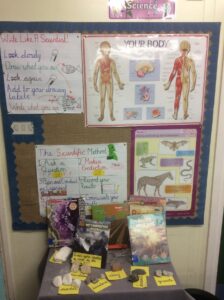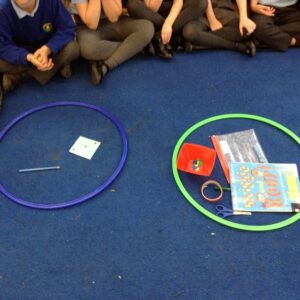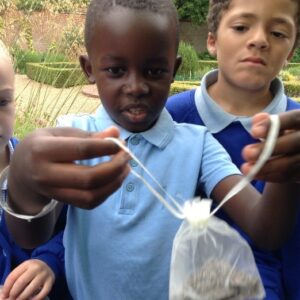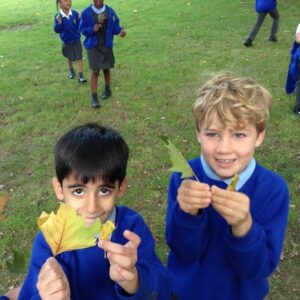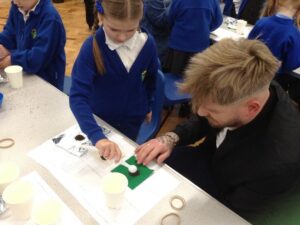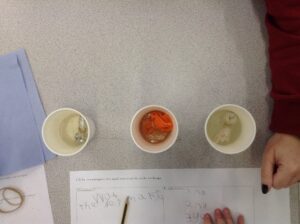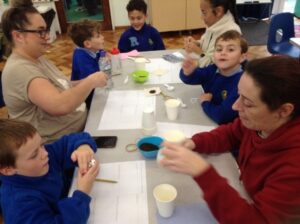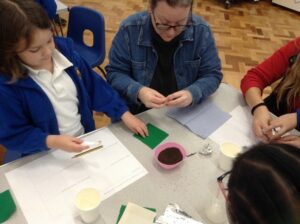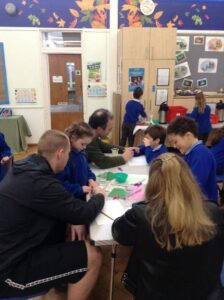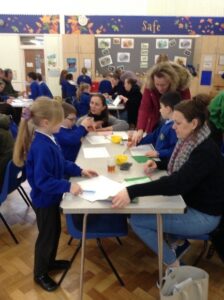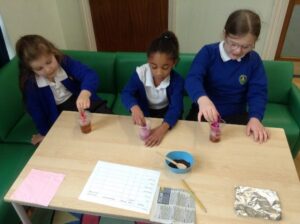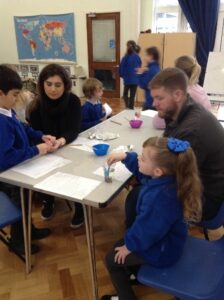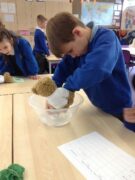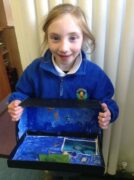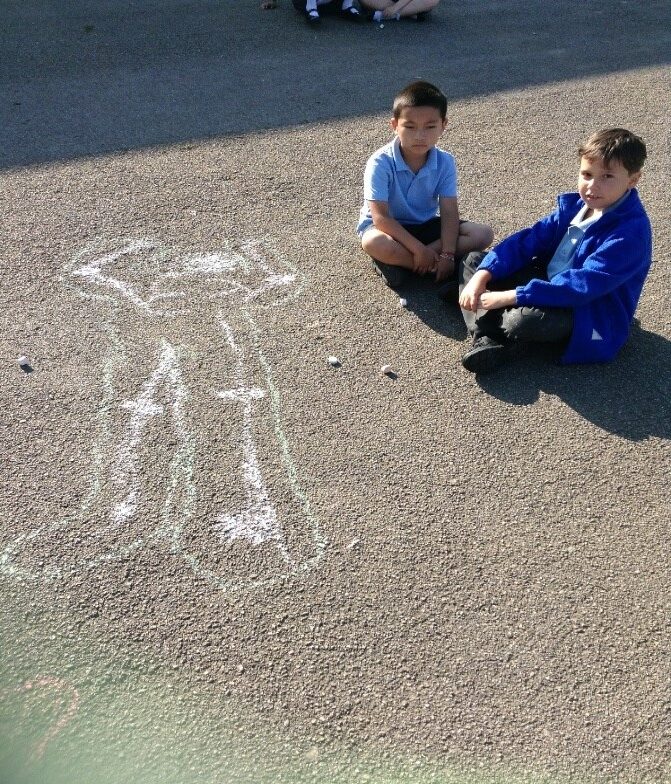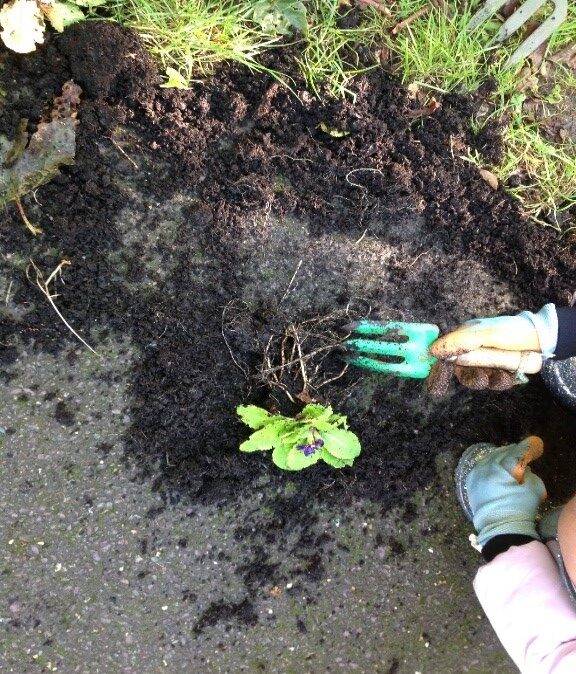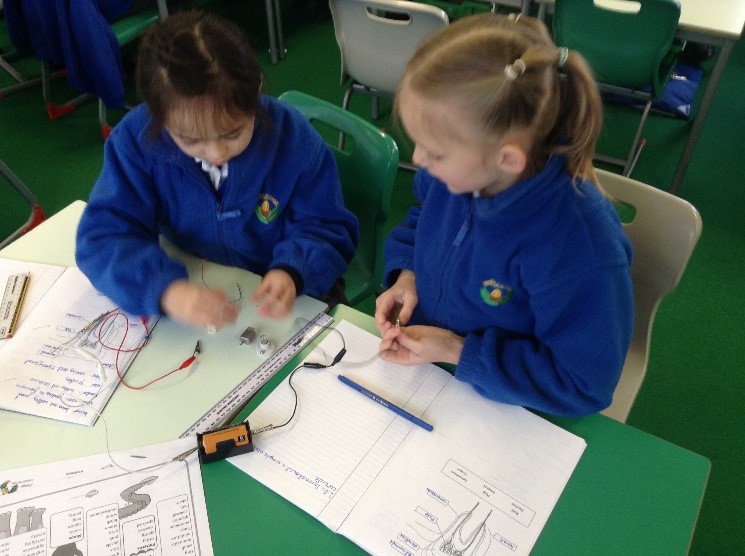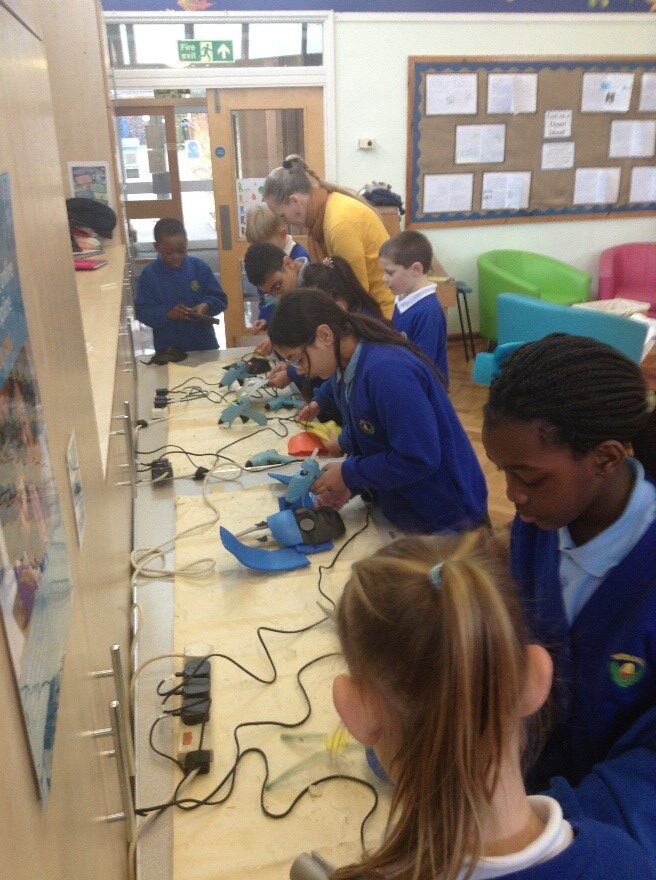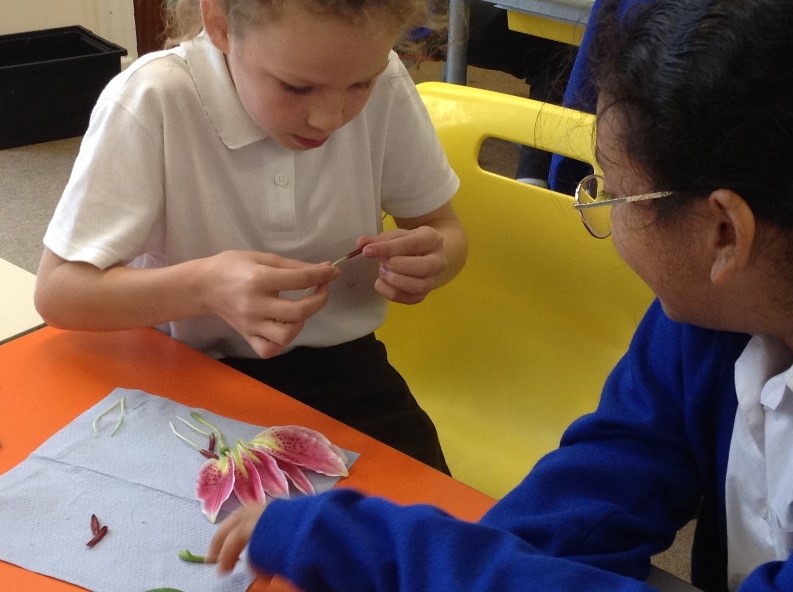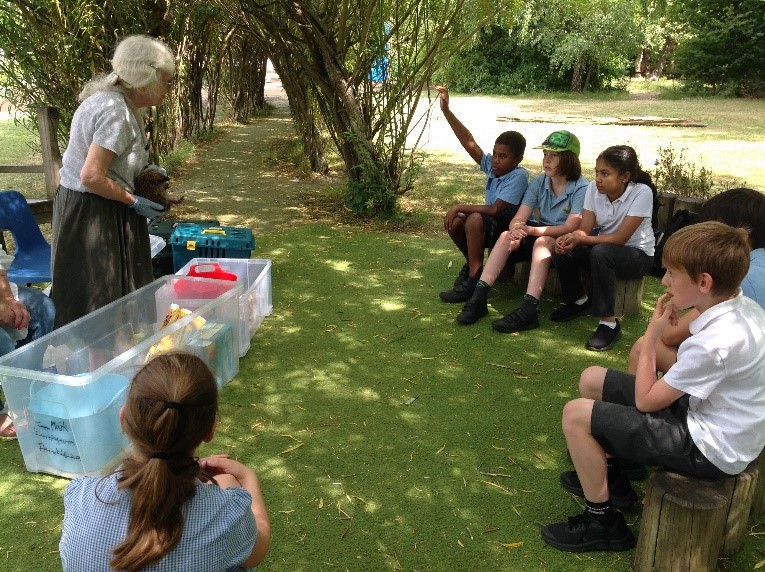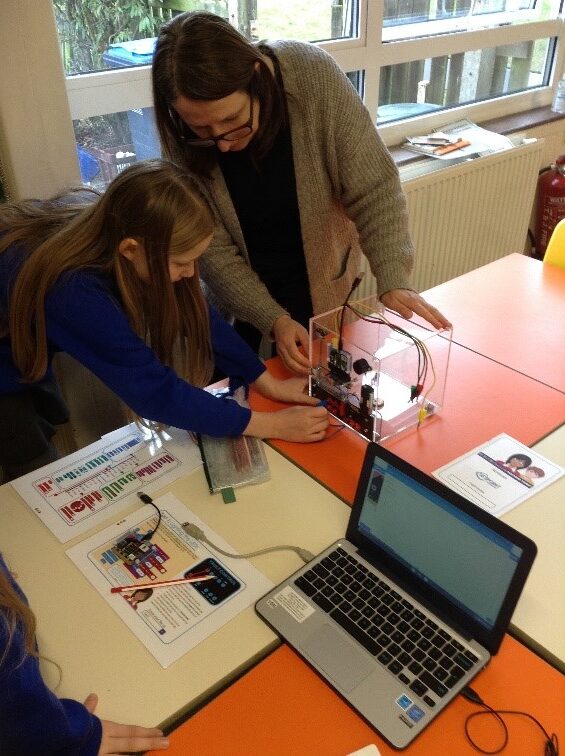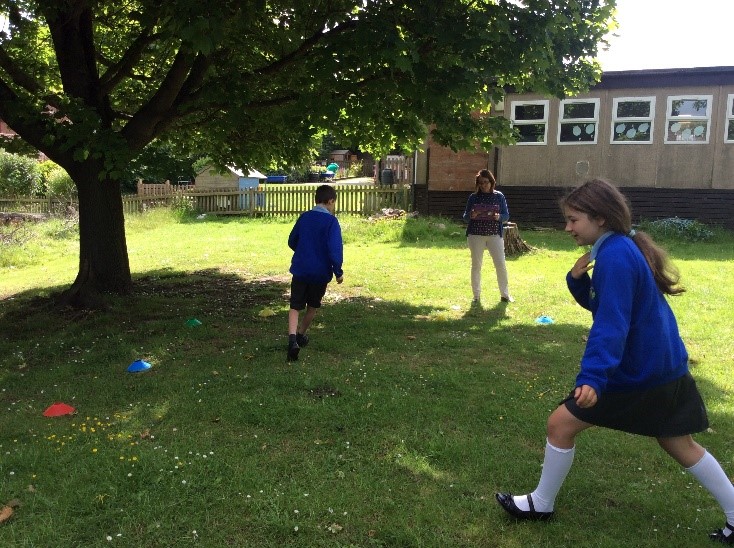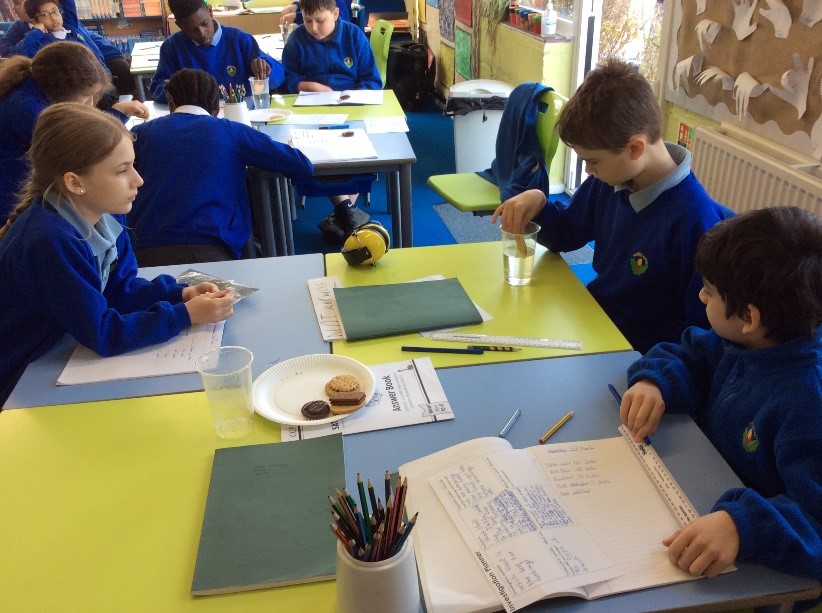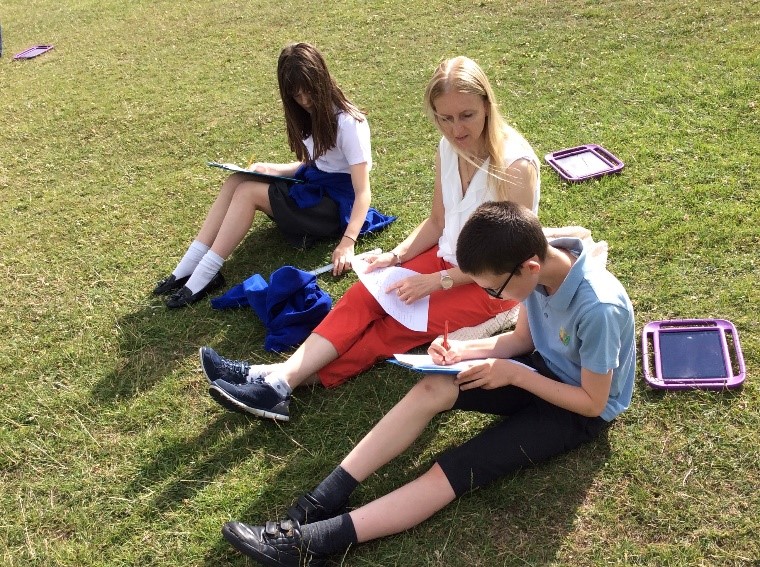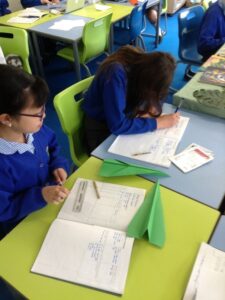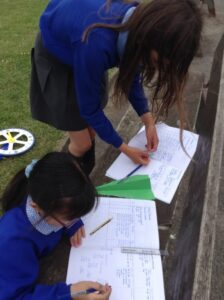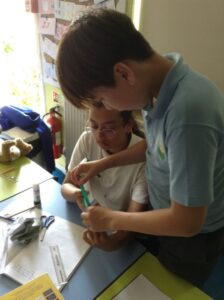Subject Lead: Mrs E Martindale
- Science at The Ryde School (590.25KB)
- Science School Development Plan 2023-2024 (145.86KB)
Science Curriculum 2023-2024
- Year 1 Objective Map - Science Curriculum (302.20KB)
- Year 2 Objective Map - Science Curriculum (186.86KB)
- Year 3 Objective Map - Science Curriculum (269.37KB)
- Year 4 Objective Map - Science Curriculum (186.17KB)
- Year 5 Objective Map - Science Curriculum (289.87KB)
- Year 6 Objective Map - Science Curriculum (188.73KB)
Exploring Science at The Ryde School
Science Displays Autumn 2023
Take a look at some of our fantastic science displays from this term. Class 6 have looked at classifying and grouping invertebrates. They created accurate models using research.
Class 1 have been looking at properties of materials and using scientific vocabulary to describe them.
Class 3 have been doing lots of investigations into rocks and fossils.
Class 1
- Class 1 introduced Venn diagrams and sorted materials according to their properties. They looked at ‘silly’ materials to help build the children’s understanding of what properties different materials have.
- Class 1 went a trip to Knebworth House and took part in a seed workshop. They looked at uses of plants like medicinal plants and plants we eat.
- As part of their work on plants, Class 1 went on a walk around the school to find leaves and used these to help identify and name trees. They also did some sketching sorting and labelling using the key words deciduous and evergreen.
Class 2
In class we have been learning about materials, their properties and how suitable they are for different purposes. We invited our parents in to help us investigate the best material to make tea bags from.
We made our predictions and designed our investigation. We kept the amount of tea in each bag the same and only changed the material. Most of us thought that the paper towel would not make a good tea bag because it would soak up too much water and fall apart letting all the loose tea out. We also predicted the tin foil would make a terrible tea bag because it is waterproof. Most of us predicted the felt would be the best material.
After our experiment we reflected on what we had learnt and the best option for tea bag material was… paper towel!
Our parent activity this term was linked to our learning in science on the suitability of materials. We started with a story “Poor Uncle Astro! He wants to make a nice cup of tea but he’s run out of tea bags. The shop is only selling packets of loose tea leaves. Uncle Astro doesn’t like tea leaves floating around in his drink and likes his tea a lovely light brown colour. Can you make him some tea bags?” In class we started by sharing our predictions on what material we thought would work best.
Isabel – “I think felt because it is thin and will let out the colour.”
Gabriel – “I think the fabric because it won’t break in the water.”
We then thought about how we could make sure it is a fair test. During the experiment, we would make sure to use the same amount of tea leaves, the same size of material and the same amount of dunking time. We completed the experiment with our grown-ups and recorded our findings. Back in class we shared our results:
Maddie – “Tissue paper looked like a real tea bag!”
Aubree – “Tin foil did not work because it was too thick.”
James – “I learnt that felt was the best because it made the right colour tea with no bits.”
Suitability of materials
We tested different materials to discover which would be best to make a pair of wellies. We considered how to make it a fair test and identified that it needed to be waterproof and strong
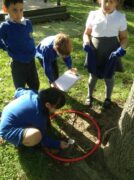 Alive, dead, never been alive.
Alive, dead, never been alive.
We placed a hula hoop on an area of the field and used magnifying glasses to help us find things that are alive, dead or never been alive. We thought carefully about grass and had a discussion about whether it is alive or never been alive. Some of us thought it was never alive because it doesn’t have a heart.
Habitats
We created shoebox habitats. We used our previous learning from our school trip and lessons in school to help us think carefully about what animals need in their habitat to help them survive.
Class 3
- Class 3 have been investigating skeletons. They drew what they thought a skeleton looked like at the beginning of the year and then have been doing lots of creative activities to develop this knowledge including creating models and completing drawings outside.
- The children have looked at what plants need to survive and the conditions that a seed needs to germinate. As part of this learning they have gone outside and observed the conditions that plants need and then planted some new plants in the school grounds.
- What materials are reflective? How can we see a person walking in the dark? Does light bend? These are a few of the questions Class 3 have been investigating this year when looking at light.
Class 4
- Class 4 have been learning about electrical circuits, they had to make a circuit which worked and worked out the rules involved in making a complete circuit.
- The children have worked on locating microhabitats around the school and what conditions are created in these micro-habitats.
- Class 4 had a science workshop using the material Plaztazote. They learnt about how the material changes from a solid to a more malleable material. They used this new material to create a mask.
Class 5
- Class 5 have explored the parts of a flowering plant. They dissected a lily and identified the parts that help them reproduce.
- The whole school had a visit from Mrs Thomas who came to speak to use about hedgehogs and how to protect them. Class 5 were very interested as they have worked hard to create different habitats for living things in the school grounds.
- They had a STEM workshop led by the local STEM ambassadors. They had to use a range of skills including coding and knowledge of levers to crack a code and open a safe.
Class 6
- Class 6 have been learning about evolution and inheritance. They did an excellent outdoor investigation which helped pupils understand why inheritance is so important for survival.
- For Science day, Class 6 investigated which biscuit was the best for dunking. They created their own investigation and recorded their experiment in groups. They the created clear scatter graphs to record their results and feedback what they had found out.
- How fast is your resting heart rate? How does this compare to your heart rate when you are active? Class 6, along with their parents, investigated these questions. Timing their heart rate and recording their findings accurately.
During OAA week 2023 we completed an investigation into paper aeroplanes. We thought about different questions we could investigate relating to paper planes, for example: Do larger planes fly further? Do heavier planes fly shorter distances? How does the size of the wings impact the distance the plane will fly? Each group designed their own investigation thinking carefully about the variables and how they would measure and collect their results.
We have been looking at light as one of our science topics over the last year. In one of our science lessons this term we made periscopes. We investigated how we could use mirrors to change the direction of light beams and to reflect an image you wouldn’t usually be able to see.

